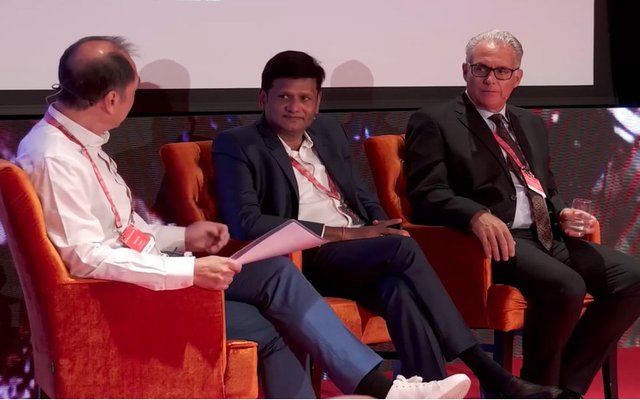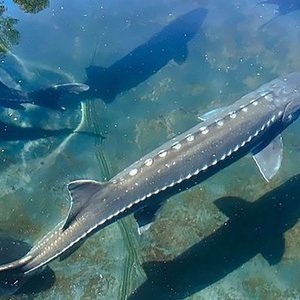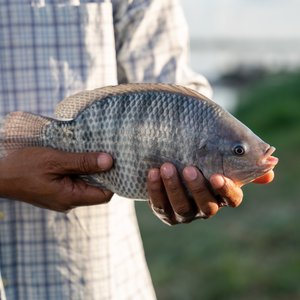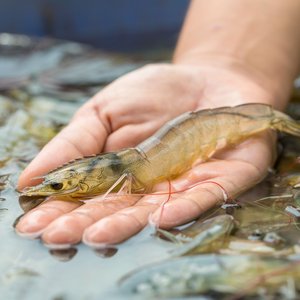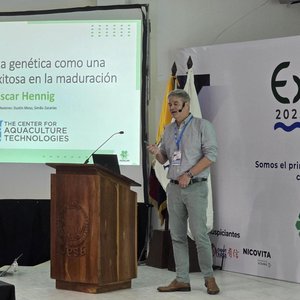Feed is one of the biggest costs for shrimp farmers and it was one of the topics discussed at the Global Shrimp Forum. Prices have increased in the past few months mainly due to the increase in raw materials costs.
Ramakanth Akula, CEO of The Waterbase Limited, presented how the situation is impacting feed companies in India. “Raw material costs are over 90% of the net sales. In the case of India, feed companies are bearing the brunt as they have been unable to pass on the inflation to farmers since 2021,” Akula said. Feed companies need to go through a process with the government to allow an increase in feed prices. Therefore, India is expecting a decrease in feed production by 15% overall this year.
Low shrimp prices are making farmers reduce the number of ponds stocked as well as lower stocking densities which has negatively impacted demand for all inputs, including feeds. “We have seen reduced or disrupted demand with some variability between markets. Our field team has noted more significant changes in Vietnam, Bangladesh and India in particular,” Chris Stock, global director – Aquaculture Sales at Zeigler, told Aquafeed.com.
“We see a trend of customers shifting this year from premium feed to budget feed, mainly due to affordability,” Hassan Skøien, innovation director shrimp, Skretting, told Aquafeed.com.
“At this moment, my primary concern is the risk of low prices fueling a race to the bottom mentality which can have significant consequences for the industry. As an example, if enough producers reduce the quality of the feed they use to try and save money upfront and if some feed companies respond in kind by sacrificing essential nutrients to respond to price pressures, there can be a cascade effect with reduced animal health and subsequent risk for disease outbreaks. Zeigler has supplied the shrimp industry from the early days of its commercial inception and thus has seen all the ups and downs in this industry so we understand how past mistakes can be repeated and create new problems,” Stock said.
“We see that the majority of our customers are clearly struggling to make ends meet in the current climate environment due to shrimp prices. The number one objective for most is to survive. Market consolidation has thus once again accelerated, which is a concern,” Skøien said.
Expansion and consolidation in Ecuador are bringing more changes. “Many of the larger Ecuadorean shrimp producers are investing in their own modern processing facilities and thereby they will likely hit Asian producers exactly where they still hold some advantage: the capability to make value-added consumer products with a higher degree of processing,” Henrik Aarestrup, VP LATAM, Hatchery & Shrimp, BioMar, told Aquafeed.com.
Parties in the value chain were also pointed out. “Small producers especially in Asia buy their feed and other consumables for their production from distributors and wholesalers. This increases their production cost, and at the same time, they mostly sell to middlemen and traders, so more parties in the value chain have to make a margin, ultimately reducing competitiveness,” Aarestrup said.
Skøien agrees. “Market conditions are more favorable towards retailers than towards shrimp farmers at the moment. This is not sustainable. To enable shrimp farmers to run profitable operations, this needs to change. Otherwise, the shrimp farming industry will need to reduce their supply in order to increase prices. Reducing supply is not the preferred way forward by the farmers as ultimately the consumers will be affected.”
The Global Shrimp Council initiative unveiled at the forum was welcomed by the audience since boosting the demand should bring prices up. But all initiatives have their own issues. “Looking at the experience from salmon, it was really a long process, so it will most likely not change much for shrimp in the short run. Additionally, salmon is a more uniform product due to its origins, making it easier to promote in a generic way. In contrast, shrimp is produced in many different environments and manners around the world, which makes it more challenging to tell a single strong story to the consumer,” Aarestrup said.
Lower shrimp feed prices are predicted
Carlos Mera, managing director at Agri-Commodities Market Research, forecasted that feed prices are going to be a little lower in the next nine months due to an expected change in raw materials price dynamics.
Mera explained that corn and wheat prices have been on a downtrend in the past few months. On the other side, soy prices were high due to the low harvest in Argentina affected by la Niña and low planted area in the US but limited by high availability in Brazil and weak soy demand from China.
“Wheat prices are expected to recover. They have dropped more than 14% in August since there is a deficit globally and a few crops were not doing well in the US and Australia,” Mera said. “For the medium term, a potential change in the government in Argentina is expected to have an impact on the global availability of soybean since the potential winner advocates for freeing market economics and a reduction or cancelation of export taxes, so it is expected to Argentina to produce more soybean and have more exports. At the same time, in the US, there is an increased demand for biodiesel which means an increase in soybean crushing. Since there is no extra domestic demand for soybean meal, it is expected to be exported and increase its availability for the global market. Therefore, a drop in soy price is expected by about 10-20%.” Since soybean is a larger proportion of shrimp feed than corn and wheat, Mera expects a reduced price in the next nine months.
The shortage in Peru fishmeal and fish oil production for 2023 was also discussed by Petter Martin Johannessen, director general at The Marine Ingredients Organization – IFFO. “The shortage will be significant but there is still a lot of fishmeal in the world. With the professionalization of the aquaculture industry, less cost formulation is used and fishmeal will find its way to where it is most efficiently used and where it brings value to the product.”


